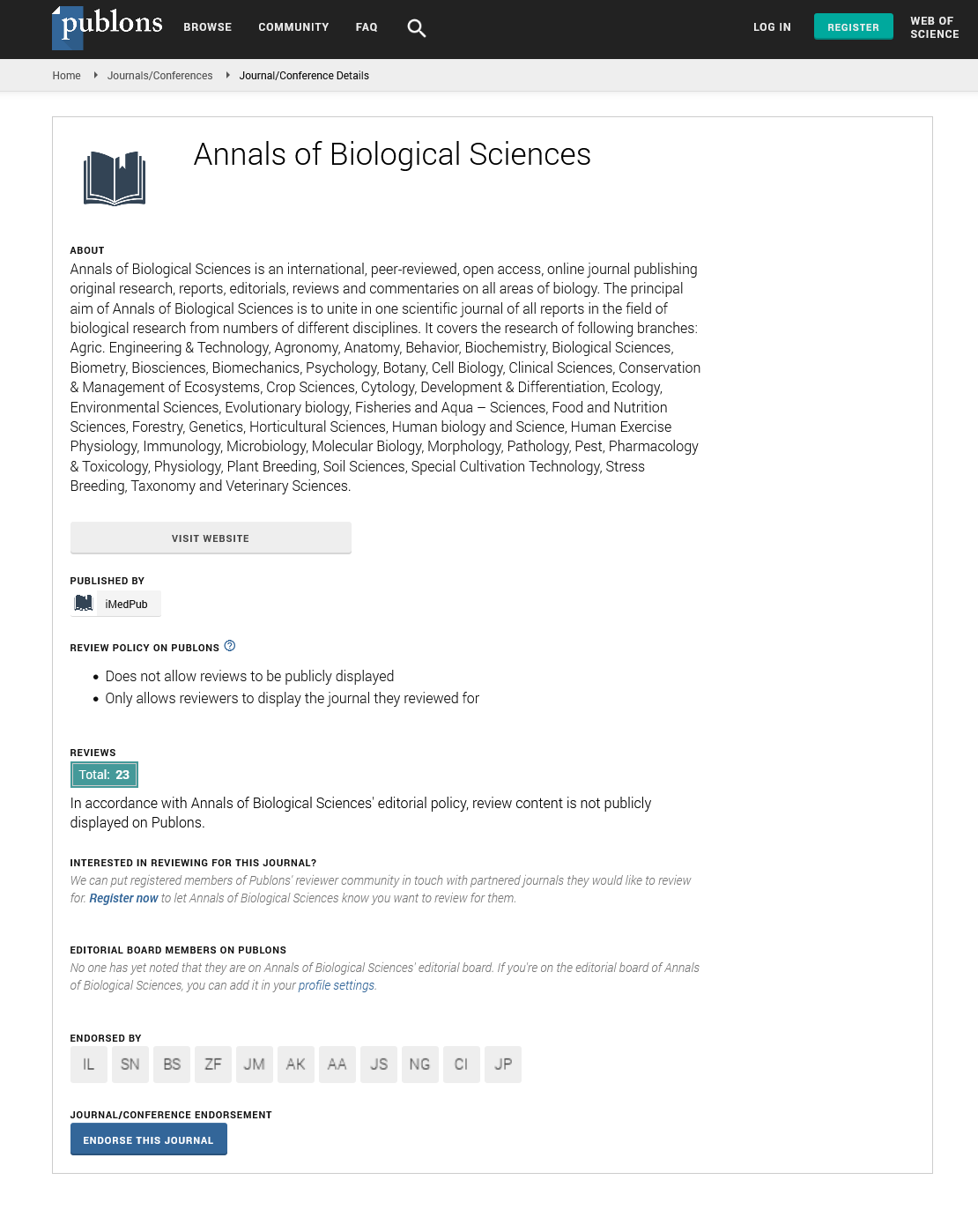ISSN : 2348-1927
Annals of Biological Sciences
Abstract
Demographics of Blood Transfusion in Lebanon: A Retrospective Study
Lebanon is a small country with a developing healthcare system. Healthcare institutions ranges from small peripheral hospital, to large university medical centers. When it comes to blood transfusion, different blood bank follows different guidelines, in terms of techniques used during the transfusion process and collecting data. Thus, in Lebanon, demography on a national level is not well established.
This retrospective study shows the demography (sex, age, repartition according to areas) of blood transfusion in Lebanon. The data were collected from 35 hospitals across the country, during the year of 2016. The exclusion criteria for transfusion and adverse reactions are reported as well.
This study showed a huge difference between the number of voluntary blood donors (15.5%), and the donors by compensation (84.5%); similarly, a large statistical difference was noted between male donors (98%), compared to female donors (2%);
In Lebanon, donors between 25 years and 44 years old are the highest percentage (58.95%), followed by donors between 18 years and 24 years old (25.83%). The most frequent undesirable transfusion reactions were chills and hyperthermia in 0.25% of all transfusions, whereas the most common reason for deferral of transfusion was due to positive serology in 2.36%.
Awareness campaigns and blood drives should be done on all Lebanese territories, by the government and non-governmental organizations, in order to increase the number of donors, especially the young generation and women.
Author(s): Mahmoud El-Hussein, Chady El-Tawil, Jad Kassem, Cima Hamieh, AbdulKarim El Karaaoui, Naji Souaiby
Abstract | Full-Text | PDF
Share This Article
Google Scholar citation report
Citations : 406
Annals of Biological Sciences received 406 citations as per Google Scholar report
Annals of Biological Sciences peer review process verified at publons
Abstracted/Indexed in
- Google Scholar
- China National Knowledge Infrastructure (CNKI)
- WorldCat
- Publons
- ROAD
- Secret Search Engine Labs
Open Access Journals
- Aquaculture & Veterinary Science
- Chemistry & Chemical Sciences
- Clinical Sciences
- Engineering
- General Science
- Genetics & Molecular Biology
- Health Care & Nursing
- Immunology & Microbiology
- Materials Science
- Mathematics & Physics
- Medical Sciences
- Neurology & Psychiatry
- Oncology & Cancer Science
- Pharmaceutical Sciences
